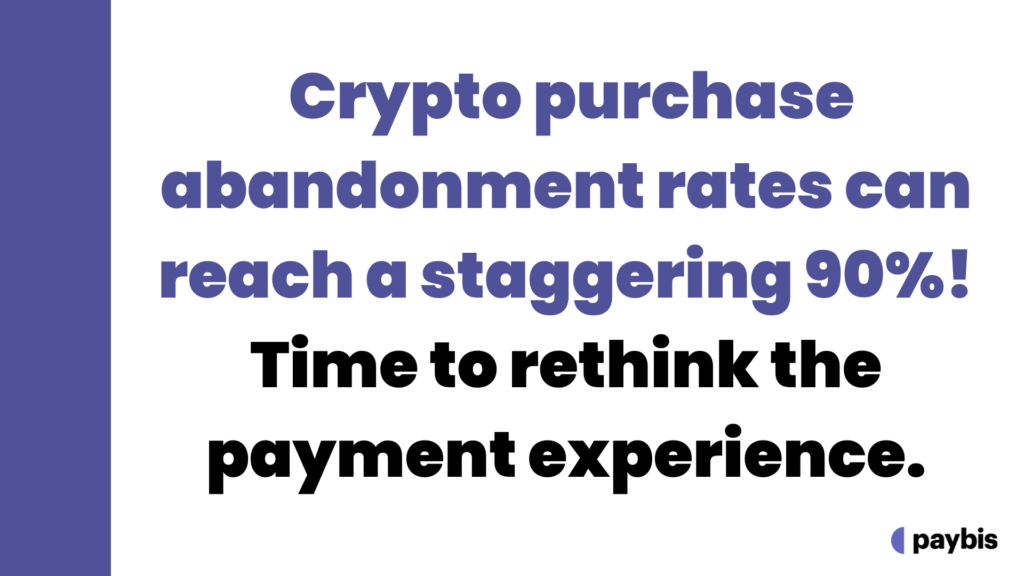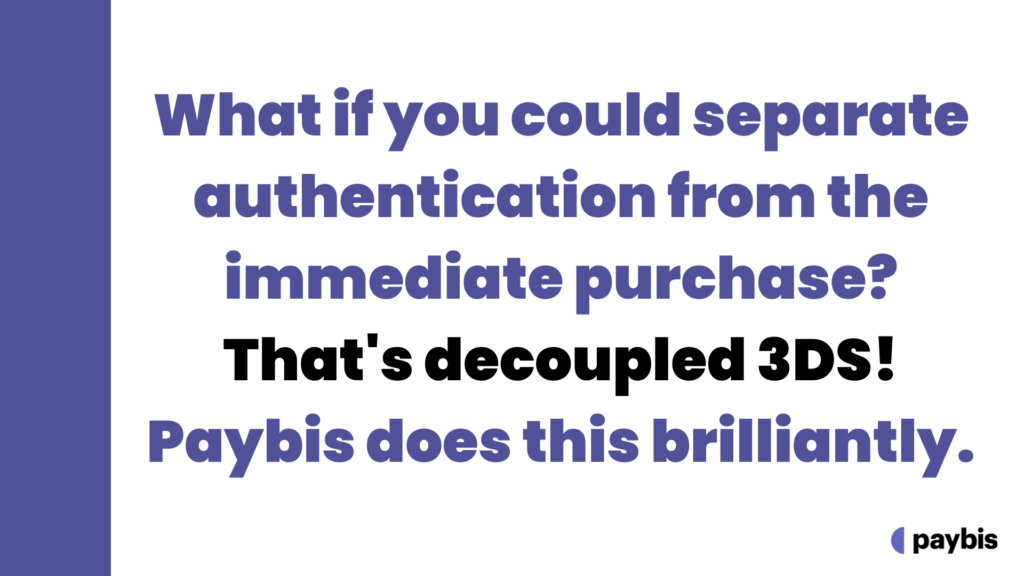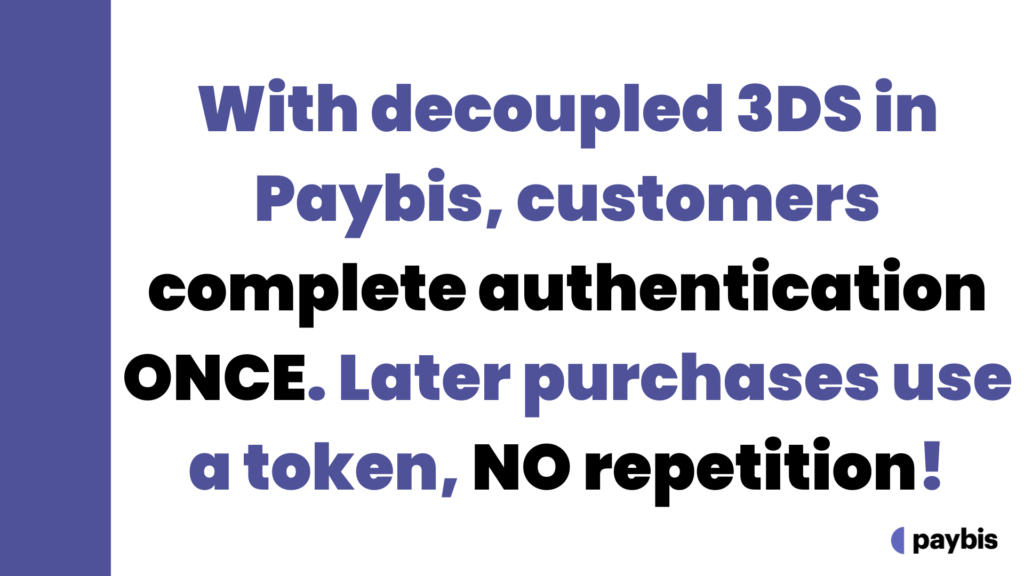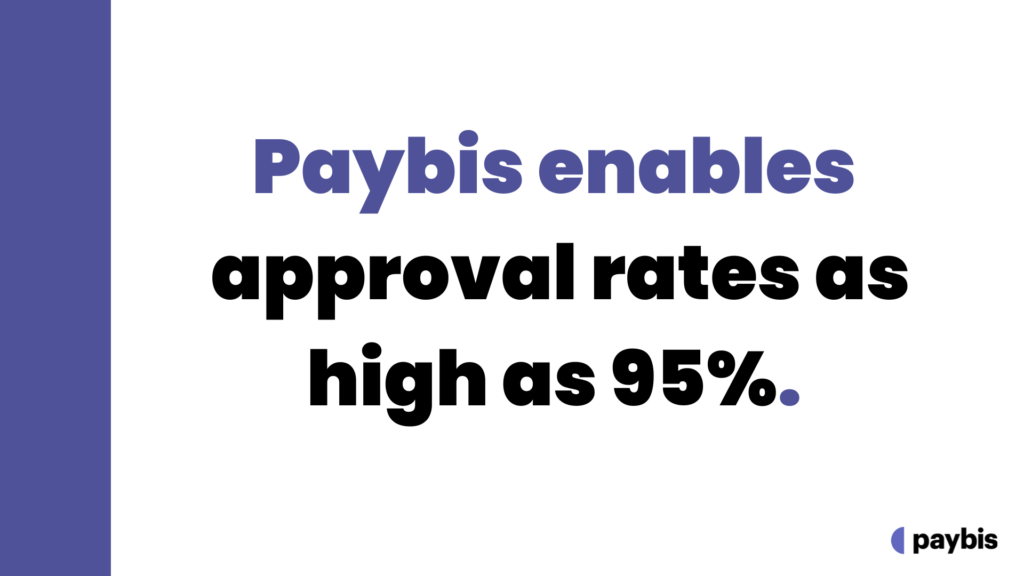Decoupled 3DS: Enabling Efficient Transaction Flow
You’ve spent countless hours building a seamless user interface for your crypto platform. A potential customer is ready to buy in, then suddenly, they’re hit with a clunky authentication process that sends them bouncing away.
Traditional 3DS, while necessary for fraud prevention, can be the unexpected roadblock that derails your conversions.
A report by Cointelegraph Research suggests that abandonment rates when purchasing cryptocurrencies can go as high as 90%.
Crypto on-ramps should be gateways, not hurdles. Decoupled 3DS is the key to transforming the customer payment experience.
Table of contents
Understanding the Traditional 3DS Model
One of the cornerstone technologies safeguarding digital purchases is the 3-D Secure (3DS) system. To appreciate the innovation brought by Paybis with their decoupled 3DS feature, it’s essential to first understand the traditional 3DS model.
What is 3DS?
3-Domain Secure (3DS) is an authentication protocol designed to enhance security for online card transactions.
It involves an additional verification step, where the card issuer confirms the cardholder’s identity, typically through a password, a code sent via SMS, or biometric validation.
This system involves three key players;
- the cardholder,
- the merchant, and
- the card issuer.
It’s called “three-domain” because it encompasses the issuer domain (the bank), the acquirer domain (the merchant), and the interoperability domain (the technology connecting the first two).
Challenges with Traditional 3DS

- Friction in Customer Experience: Each online purchase typically requires the cardholder to complete the 3DS process. This can add steps to the checkout process, potentially leading to cart abandonment.
- Inflexibility in Transaction Processing: Traditional 3DS is closely tied to the transaction process. If a transaction is declined or rerouted, the customer might have to re-authenticate, adding to the complexity and time taken for each transaction.
- Impact on Approval Rates: Frequent authentication requests can lead to customer frustration and a higher likelihood of transaction abandonment, affecting the approval rates negatively.
3DS in the Context of Multiple Payment Providers
For businesses using multiple payment providers, which is the case with most crypto on-ramps, the traditional 3DS model can be particularly cumbersome. If a transaction is declined by one provider and rerouted to another, the customer is often required to re-authenticate, leading to a repetitive and unwieldy process.
In scenarios where transactions are routed through various providers for higher approval rates, the traditional 3DS model can become a bottleneck, necessitating a more streamlined solution.
Decoupled 3DS In Paybis
To decouple 3DS means to separate the 3-D Secure authentication process from the immediate point of transaction.

Traditionally, 3DS authentication occurs at the time of each transaction. Decoupling it means performing this authentication step separately, such as ahead of time, and then applying the authentication to subsequent transactions.
This approach reduces friction and repetitive steps for the user, especially in environments with multiple payment providers, as it eliminates the need for multiple authentications for each transaction attempt.
Paybis implements this by asking customers to complete the 3DS authentication at the beginning of the payment process. Once authenticated, a token is generated and used for subsequent transactions, eliminating the need for customers to go through the 3DS process again for each payment provider within the transaction cycle.

What Does This Achieve?

Paybis employs a smarter, dynamic routing system. Each transaction is tested with all of Paybis’ payment providers until it’s either approved or declined.
This is because different payment providers have varying relationships with banks. Depending on the region and nature of transactions, the likelihood of approval varies from provider-to-provider.
Therefore, Paybis’ system doesn’t confine transactions to specific providers based on fixed characteristics. It is checked with all until approved by at least one.
If this were to be done in the traditional way, the customer would have to authenticate multiple times until the transaction is approved by at least one provider or declined by all providers. As a result, the flow is disrupted and transaction abandonment rates would soar through the roof!
Paybis’ method ensures a higher likelihood of transaction approval. If a transaction is declined by one provider, it’s automatically rerouted to the next, without the customer having to re-enter their information because the authentication token already exists “decoupled”.
Final Thoughts
With decoupled 3DS, the customer experiences a smoother transaction, devoid of repeated interruptions.
By reducing friction and avoiding repeated declines or authentication requests, customers gain a sense of reliability and efficiency in the service, which is paramount in building trust in crypto on-ramps.
Paybis’ implementation of decoupled 3DS in a multi-payment provider environment is a strategic enhancement tailored to the specifics of cryptocurrency transactions. It addresses key pain points in the traditional 3DS process, offering a smoother, more efficient, and user-friendly approach.
Try Paybis for your business today. Contact sales for a demo of Paybis On-Ramp.
Disclaimer: Don’t invest unless you’re prepared to lose all the money you invest. This is a high‑risk investment and you should not expect to be protected if something goes wrong. Take 2 mins to learn more at: https://go.payb.is/FCA-Info




